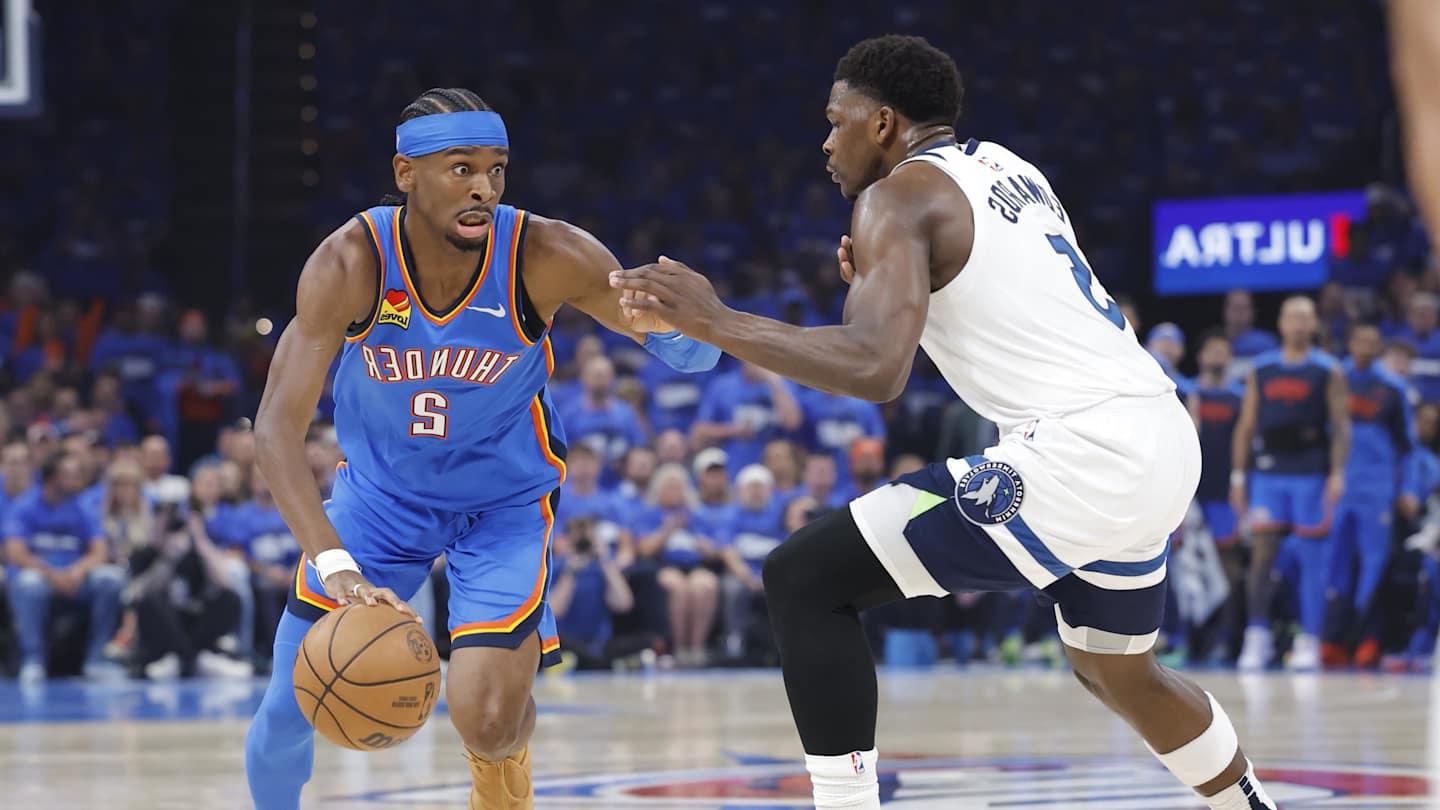The opening pair of matches in the Western Conference finals have concluded, showing the Oklahoma City Thunder in commanding form. With Shai Gilgeous-Alexander, the MVP, at the helm, the team that topped the NBA in the regular season has swiftly dealt with the Minnesota Timberwolves in the first two games at Paycom Center. The team’s performance has been stellar, with exceptional defense, fluid passing, and high spirits.
TubiTV Just Hit 200 Million Users – Here’s Why
10 Perfect-Score Shows Buried on Prime Video Right Now
The Timberwolves face a significant uphill battle as the series shifts to Minneapolis for Game 3 on Saturday. Despite a combined loss margin of 41 points in the two games, there remains a glimmer of hope. They managed to keep the score competitive in the first halves and are currently underperforming in shooting, particularly from beyond the arc where they have made only 28.9% of their attempts compared to a 37.7% shooting performance during the regular season. A rebound in their shooting accuracy, combined with the home court advantage, suggests the series might still become competitive.
The initial games have revealed several important insights. Here are three key observations from the Thunder’s victories in these games.
The Importance of Third-Quarter Performance
The $3.99 Streaming Service With 500+ Oscar Winners Nobody Knows About
Cancel These 3 Subscriptions Before November 1st – Here’s Why
How a team emerges from halftime often defines their game strategy and resilience. Do they aggressively take control, or do they focus on minimizing damage? It’s possible to secure victories and even championships with either approach. However, teams that assert dominance in the third quarter often instill fear in their opponents.
The Thunder are a prime example of this, having demonstrated superior third-quarter performances throughout the regular season, leading the NBA with a net rating of 14.0 and outscoring their opponents by a staggering 299 points in this period. This trend has continued into the playoffs, where their third-quarter point differential remains unmatched.
In the regular season, these bursts after halftime often turned tight games into blowouts for the 68-win Thunder. This has proven to be a critical advantage in the playoffs, particularly evident in the Western Conference Finals (WCF), where their third-quarter dominance has been a decisive factor.
In Game 1, despite trailing by one at halftime, OKC outscored the Timberwolves by 14 points in the third quarter, leading to a 26-point win. A similar pattern was seen in Game 2, where they turned an eight-point halftime lead into a substantial victory margin by again outscoring the Timberwolves by 14 in the third. Minnesota must find a way to compete in these crucial 12 minutes post-halftime if they wish to challenge the Thunder more effectively and prevent the games from slipping away as they did in the first two contests.
Timberwolves’ Offensive Struggles
The Thunder’s defense has been exceptionally tough, holding the Timberwolves to a mere 38.2% shooting from the floor and stifling their scoring opportunities by forcing turnovers and limiting rebound chances. The result is a Minnesota team that averaged 114.3 points per game in the regular season being restricted to just 95.3 points per game on poor efficiency.
This level of performance is insufficient for postseason success. The Timberwolves need to find a way to penetrate OKC’s defense starting with Game 3. Anthony Edwards appears to be a key figure in this challenge, showing promise in Game 2 with 32 points and better overall play, despite his teammates not providing the necessary support.
Julius Randle, Mike Conley, and Rudy Gobert have been particularly disappointing, providing minimal offensive output. The team as a whole needs to capitalize on the open shot opportunities that the Thunder defense is conceding. In the series thus far, Minnesota has failed to convert these chances, shooting only 29.2% from three on open looks despite shooting 40% in the regular season. To swing the momentum, the Timberwolves must find their shooting touch and receive more consistent contributions from their key players.
Controversy Over Shai Gilgeous-Alexander’s Free Throw Frequency
The significant number of foul calls favoring Shai Gilgeous-Alexander has become a notable discussion point in this series. His ability to draw fouls has been so effective that even commentators have pointed out his frequent visits to the free throw line. Over the first two games, he has attempted 29 free throws, with a substantial portion of his scoring coming from these opportunities.
This focus on his foul-drawing ability overshadows his skills and unique style of play, which includes an effective mid-range game that contrasts with the modern emphasis on three-point shooting. While some may criticize his tactics to draw fouls, it remains a part of his game as long as the referees continue to award him those opportunities.
Timberwolves’ Ineffective Zone Defense
In an attempt to adjust their strategy, the Timberwolves implemented a zone defense during Game 2, primarily to reduce the number of free throws by the Thunder and to find a way to utilize Rudy Gobert more effectively, given his struggles in the series. The zone was also a response to the ineffectiveness of their standard defensive setups against OKC’s dynamic offense.
However, this strategy did not yield the desired results. The Thunder were able to exploit the gaps in Minnesota’s zone, maintaining high shooting percentages and effective ball movement, which led to easy scores. This approach may need to be reevaluated or used more selectively as the series progresses, especially to mitigate the impact of Gilgeous-Alexander’s penetration and playmaking abilities.
Similar posts:
- Shai Gilgeous-Alexander Dominates, Evens NBA Finals at 2-2 with Thunder Rally
- Shai Gilgeous-Alexander Hits Career Playoff High in Thunder’s Game 4 Victory!
- Shai Gilgeous-Alexander Reveals Why He Thrives as the Villain in Away Games!
- Timberwolves’ Championship Odds Surge as Knicks Reach Conference Finals!
- Thunder Dominate Timberwolves: 5 Key Stats as They Advance to NBA Finals

Mike Johnson is a passionate news writer with a keen interest in current events. With over a decade of experience in journalism, he has a talent for uncovering the stories that matter most. Mike’s insightful articles and in-depth analyses have made him a trusted voice in the industry. He thrives on staying ahead of the news curve, providing readers with timely and relevant information. Whether it’s breaking news, politics, or social issues, Mike’s dedication to the craft ensures that his readers are always well-informed.

